The Dardanelles are named for Dardanus, the mythical ancestral founder of nearby Troy – He was born, [as we overheard a local guide tell his group], when Zeus was ‘naughty’ with Electra, the local king’s daughter. His tomb is on a local path on the outskirts of Canakkale
Ancient writers tell us this is where Helle fell from the back of the golden-fleeced ram while passing through the strait on the way to Colchis in the Black Sea, setting the scene for Jason’s quest of the Golden Fleece. Thus, Helles-Pont (bridge). Further it’s the setting for the fatal attraction of Hero to Leander. Overestimating his endurance, he drowned attempting to swim across to meet her. Such sacrifice, however foolhardy, naturally led later romantic poets to idealize and even try to imitate them.
Homer immortalized Troy in his stories of King Priam, Hector, Paris and beautiful Helen. Archeological excavations have revealed nine separate levels of cities. A symbolic wooden Trojan horse commemorates the legendary war.
The Dardanelles has been a strategic water route and an object of conquest throughout history. The Hellespont anchored Xerxes’ pontoon bridges, constructed in 480 BCE during the second Persian invasion of Greece.
The last major sea battle of the Peloponnesian War was at Aegospotami in 405 BCE. The Athenians were taken by surprise as the Spartans under Lysander attacked them off Aegospotami. Conon, the Athenians’ captain, escaped with just 20 of his 180 ships, and the 3,000–4,000 captured Athenians were executed. Without an Athenian defensive fleet Lysander attacked Athens directly, leading to their capitulation in April 404. The battle site is located near the new bridge.
Alexander the Great later crossed here 334 BCE to begin his eastern campaign against the Persian Achaemenid Empire. Before battle, Alex the tourist visited Troy where he sacrificed at the (now lost) tomb of Achilles. He boldly crossed the Granicus River (modern Biga Çayı) in the face of his enemy, for a major victory. As the Persians fell away to re-group at the other end of the country, Alexander moved along the Aegean and Mediterranean coasts, granting autonomy and democracy to the cities (after first besieging many of them!)
Hiking in Turkey – Pamphylian theater of Termessos
The first half of our trip follows his path. The interest in this part of the world abated not. The Roman empire replaced Alexander’s successors at the end of the Roman Republic in the last century BCE and Pax Romana brought a mostly quiet few centuries. (Although Pirates of the Mediterranean were more than a theme park ride). A thousand years later the Rumeli Turks crossed here, establishing their first European beachhead, which culminated in the capture of Constantinople in 1453. Their blockading castle Kalitbahir today benignly observes the European-side ferry landing.
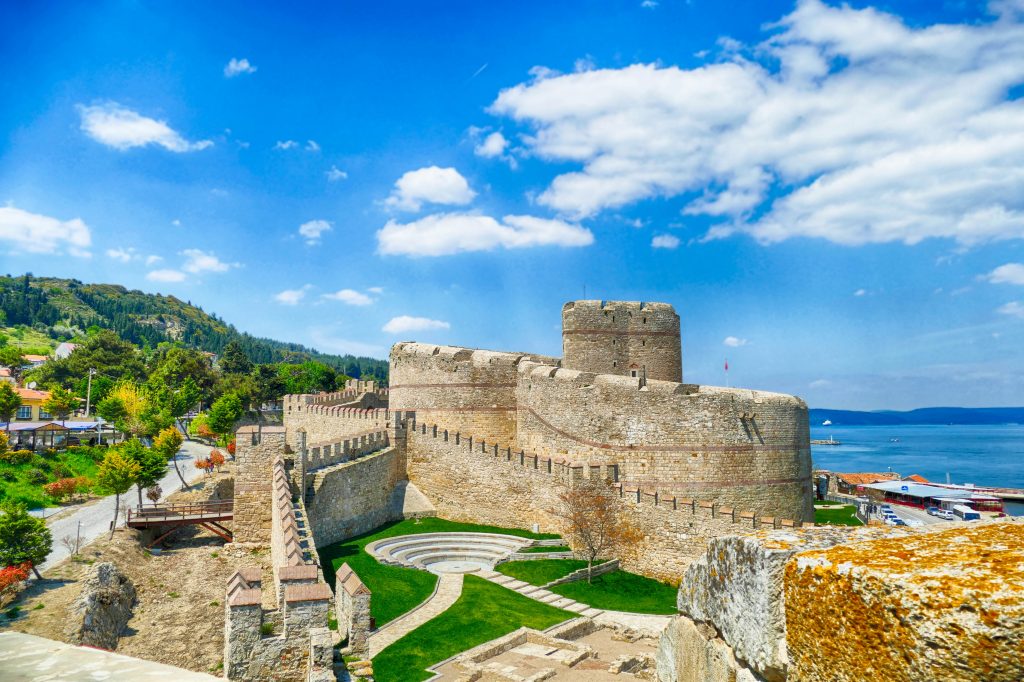
In World War I it lured yet another over-confident invader when the British made their landings.
After this consideration of the Dardanelles long history over the last 2500 years, we time travel back more than a millennium further. We move to Troy.
Troy (Troia, or “Wilusa” in the Hittite language) is an ancient settlement located in the province of Canakkale, Turkey. Troy is well-known due to Homer’s epic, “The Iliad”, which tells the story of the last days of the ten year siege. {This tale also inspired the modern measurement of the milliHelen – the quantity of beauty required to launch one ship.}
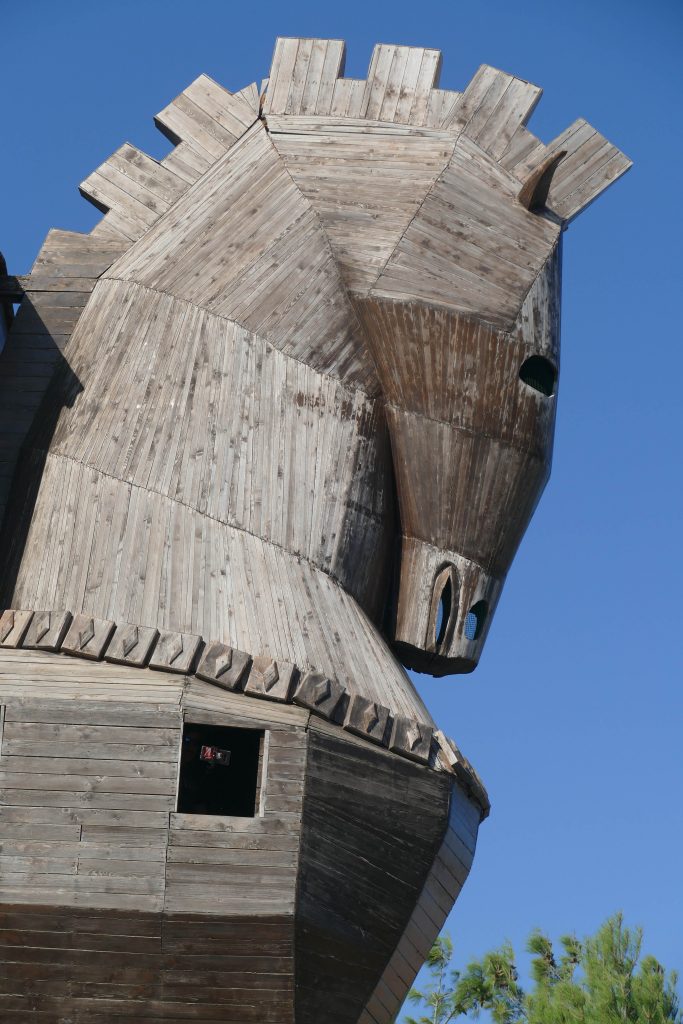
Today’s Troy is an archaeological site near Hissarlik, Anatolia. A short distance southwest from Canakkale. Troyas has a 4,000 year history and is known as a center of ancient civilizations. For many years people believed that it was a city mentioned only in tales and never actually existed until it was re-discovered in the 19th century.
Ancient Troy & Museum Excursion from Canakkale Port
Frank Calvert, an English archaeologist, conducted the initial trial excavations at Hissarlik in 1865. Heinrich Schliemann, a German industrialist, later started excavating on a much greater scale and at his own expense in 1868. This led to the discovery that the city was divided into nine distinct strata and that Homeric Troy was likely the precursor to what is now known as Troy VI.
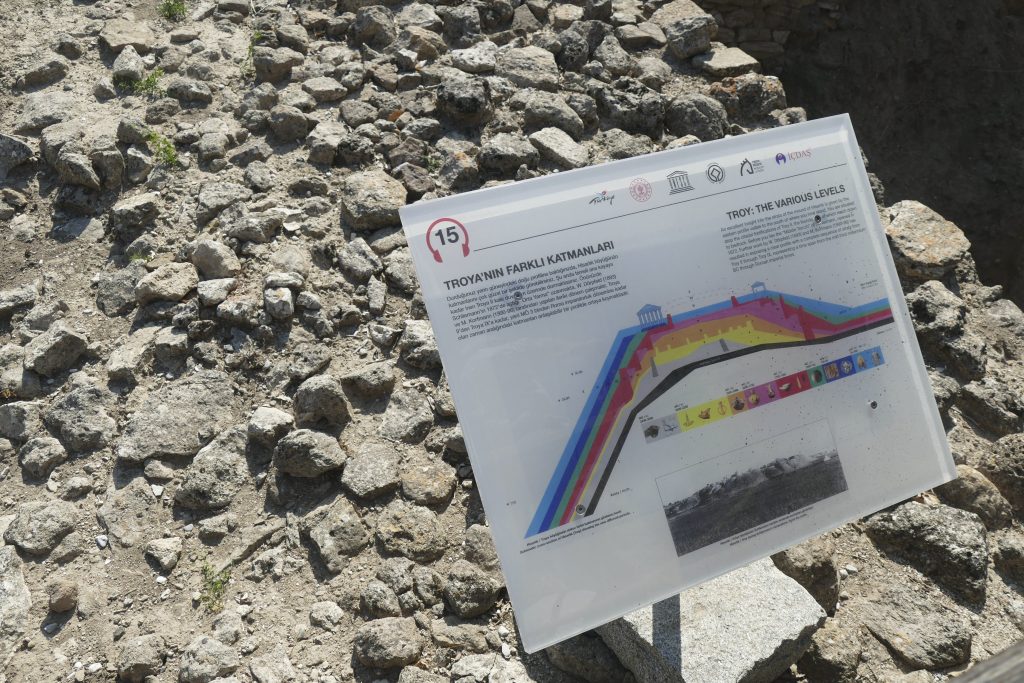
Unfortunately, Schliemann’s uneducated and ruthless search for treasure produced Schliemann’s Trench, the deep gash his workers, with little regard for archaeological value, cut thru the midden. The wreckage of Schliemann’s catastrophic dig can still be seen today and has hindered modern, scientific excavations.
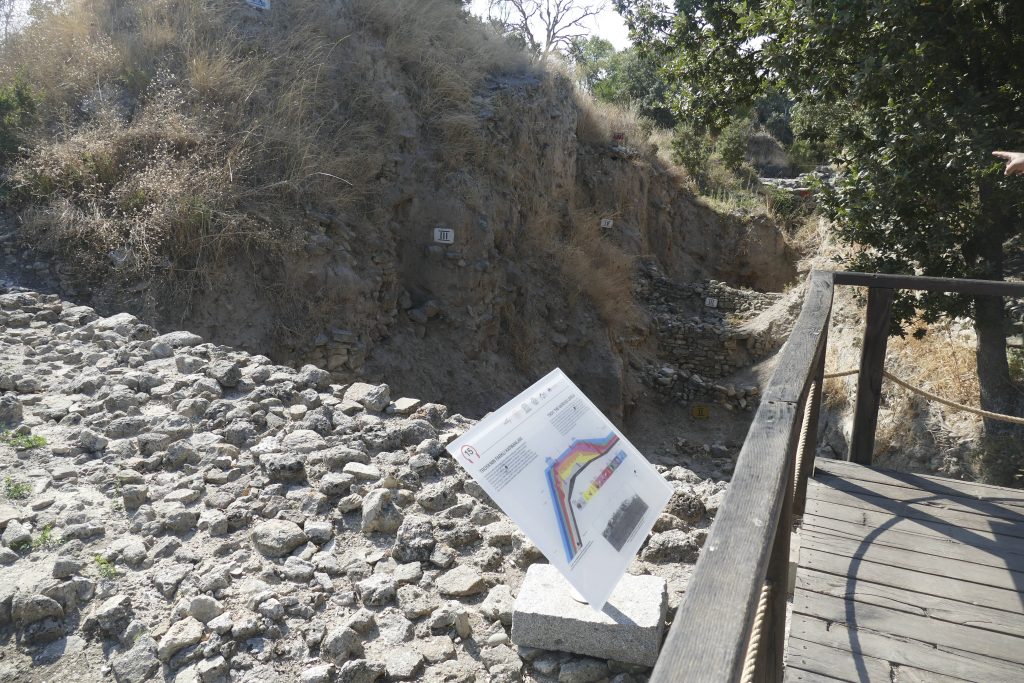
We follow the well-signed walking tour of Troy marked by signs showing the various levels that have been exposed. Archeological excavations have revealed nine separate levels of cities. Major sights include the ramp and gate of Troy II, then remains of Troy VII and IX, including the Odeon, South Gate.
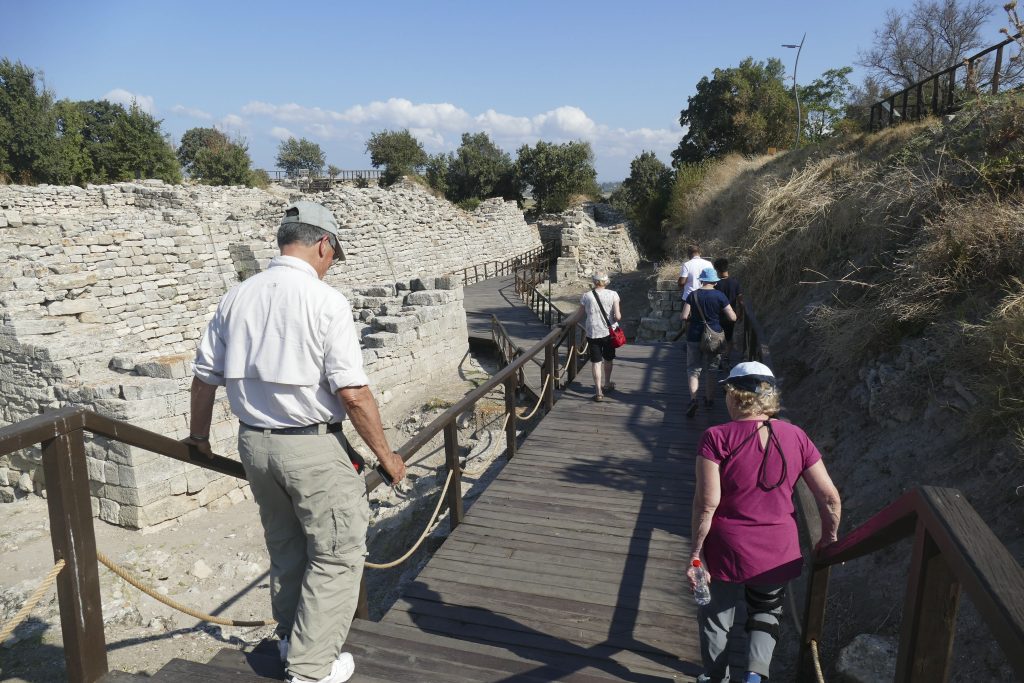
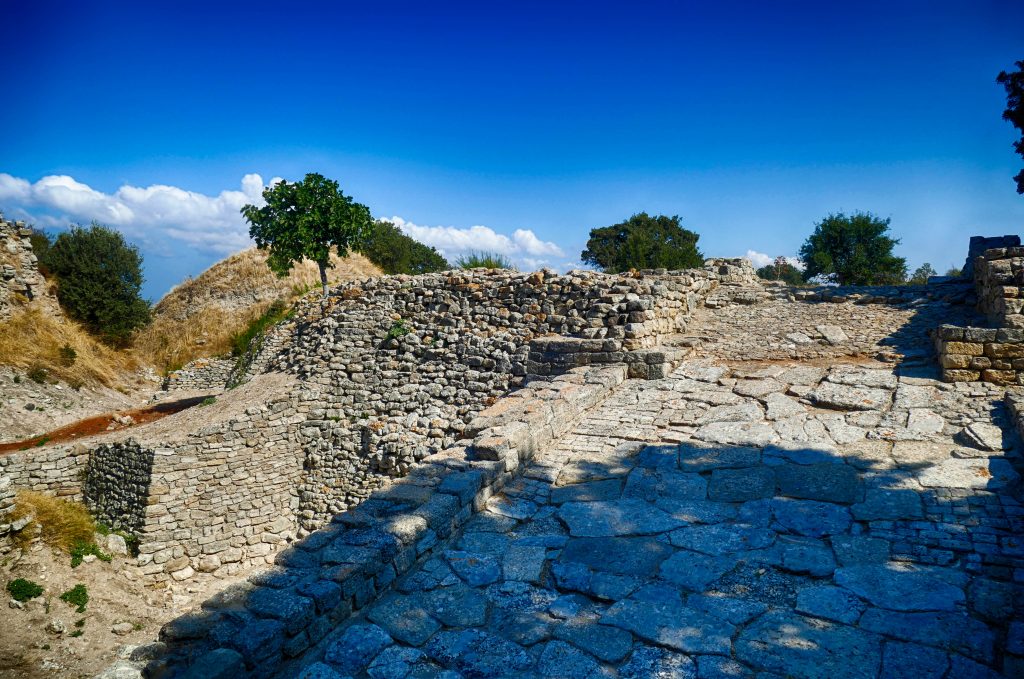
As we returned to the visitor’s center in 1999, we were reminded that this area is still a military crossroads. Overhead, US jet fighters flew back to their Turkish base after sorties over Kosovo. You can do Gallipoli and Troy as a long day trip from Istanbul, but it’s much more rewarding to take several days, which then lets you expand to Pergamum. There are good hotels in Canakkale with convenient ferry connections and a new bridge that shortens the drive significantly. |
| Other links: Visiting the World War I Battlefield of Gallipoli More Archaeology More Military History More Battlefields Recommended books on Troy and ancient history |